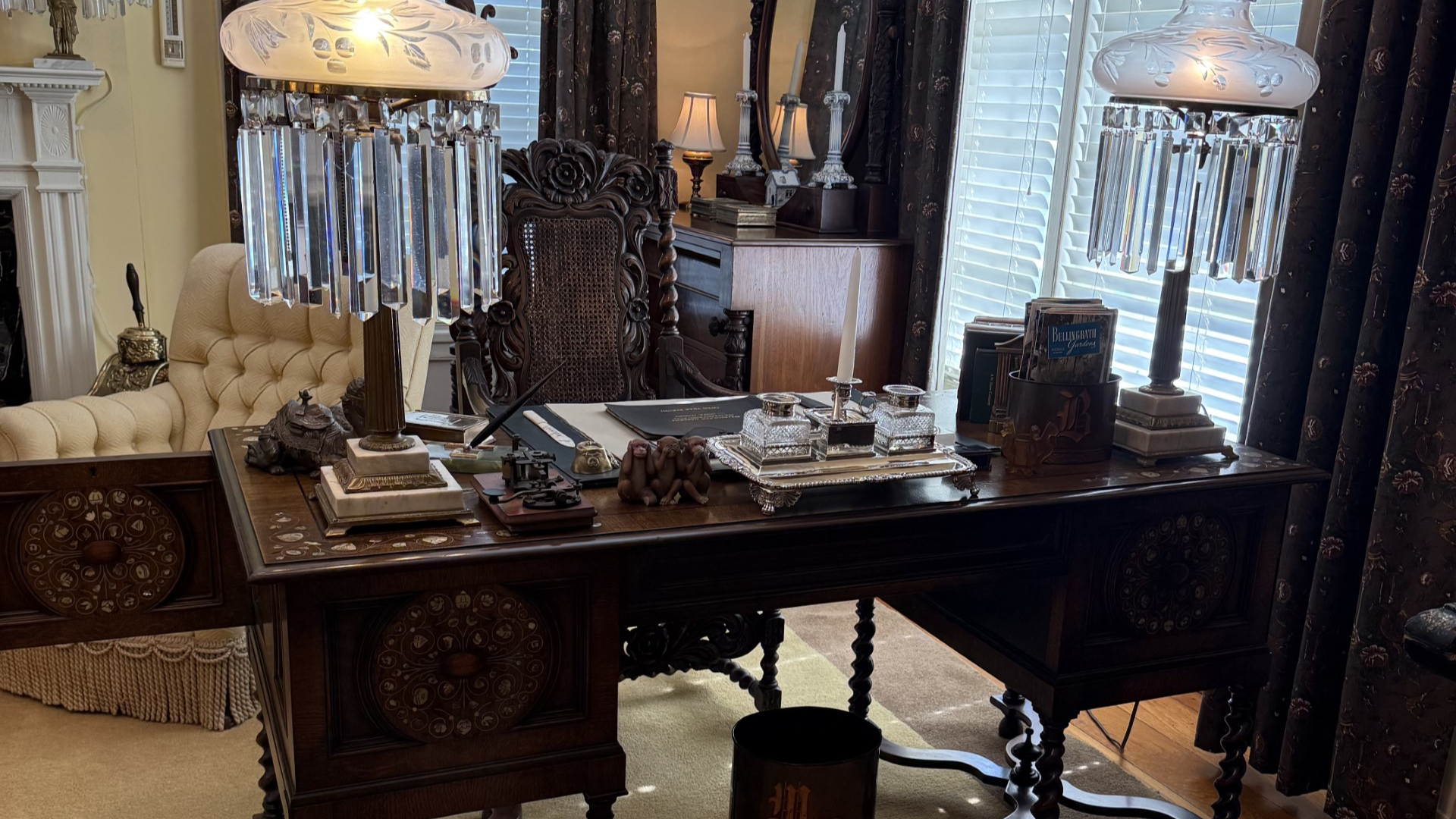Dominating Mr. Bellingrath’s bedroom is his impressive desk upon its spiral turned legs. The piece does not appear in the 1943 or 1947 inventories of the Home’s contents. The 1964 guidebook to the Home explains that it had previously been in the library of the Bellingraths’ home on Ann Street.
And why didn’t Mr. Bellingrath have a desk in his home at his Gardens? The answer is he did, but it was a modern office desk in his working office in the basement. So, he apparently did not have this decorative desk moved to its present location until after 1949 when he was preparing the Home for the eventual tours to take place after his death.
The author of the guidebook said that Mr. Bellingrath had purchased “the English walnut desk” and arm chair “in Chicago at one of the antique shows.” The only problem with that statement is that it was nowhere near being an “antique” during his lifetime and it is not English.
Research has found that it was made in Grand Rapids, Michigan by the Luce Furniture Company which had been established in 1896 by Ransom C. Luce. Thomas S. Handley, who had trained in London served as staff designer there and held a special interest in English period styles and was with the firm until 1915. It is safe to say that this was one of Handley’s designs.
What Style is it?
The style is definitely English, but the specific style is debatable. Some would term it Jacobean (1603-1625) or is it William and Mary (1685-1720)? In the 1980’s an appraiser termed it “Charles II” a term interchangeable with Carolean (1660-1685).
The only thing certain is that it combines many of the designs from the 17th century in England which were influenced by furniture being made in both Holland and France. Styling was moving away from the starkness preferred by the Puritans and moving towards a more opulent look. The walnut desk is skillfully inlaid with ebony and a vine of flowers and leaves using mother of pearl and ivory.
This combination of designs was a hallmark of the many furniture makers in Grand Rapids in the early 20th century. Those firms were seeking to create adaptations to suit American consumers, not faithful reproductions.
It is very doubtful that Walter Bellingrath would have any idea that his desk was American made. Nor would he ever guess that Jex H. Luce, his next door neighbor on Ann Street in the 1920’s, was the grandson of the founder of the Luce Furniture Company.


